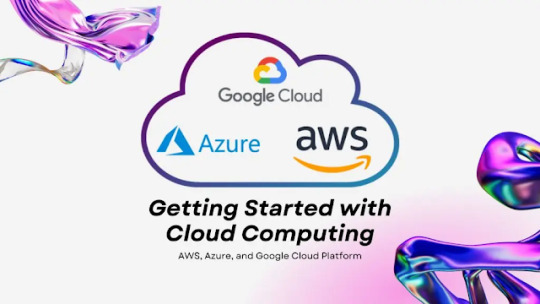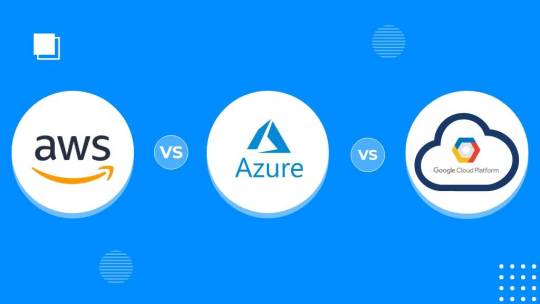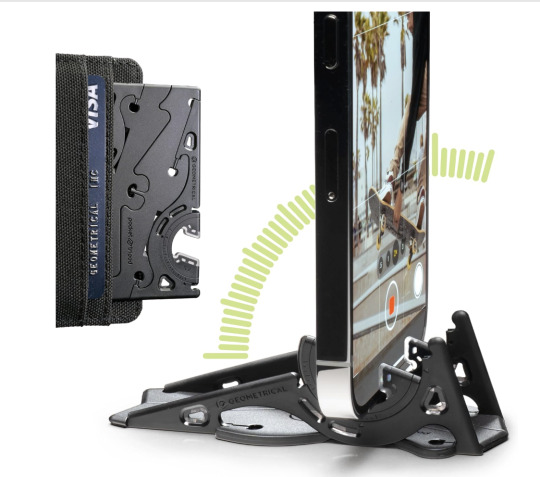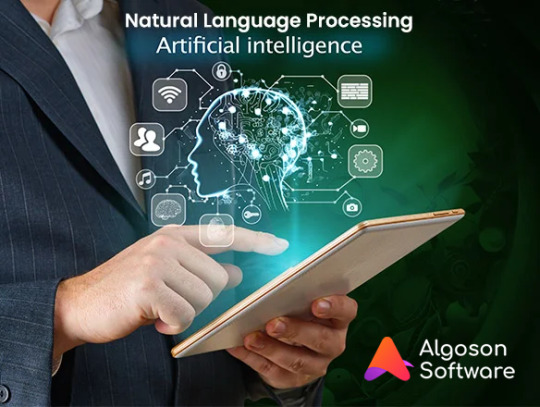#Best cloud computing companies
Explore tagged Tumblr posts
Text
#cloud solutions for growing businesses#cloud computing for growing businesses#iclimb systems india private limited#iclimb website#cloud computing services#cloud computing companies#best cloud service provider#cloud computing security#best cloud computing services
0 notes
Text
Top IT Jobs in London: High-Demand Roles & Salary Insights
London has long been a global center for business, finance, and innovation. Over the past decade, it has also emerged as one of the most attractive destinations for IT professionals. With a thriving tech ecosystem, diverse job opportunities, and competitive salaries, London is an excellent choice for those looking to build a career in IT.
Get More Job Opportunity:-https://jobsinlondon.com
Why London is the Ideal Destination for IT Jobs?
Booming Tech Industry: London is home to a rapidly growing tech sector, with numerous startups, established companies, and multinational corporations setting up offices in the city. Major players like Google, Microsoft, Amazon, and IBM have a strong presence in London, making it a hotbed for IT jobs.
Diverse Job Roles: Whether you're a software developer, cybersecurity expert, data analyst, or IT project manager, London offers opportunities across various domains. The demand for IT professionals continues to rise, driven by advancements in artificial intelligence, cloud computing, and data science.
Competitive Salaries: IT jobs in London offer some of the highest salaries in the UK. On average, a software engineer can expect to earn between £45,000 and £80,000 per year, while specialized roles like AI engineers and cybersecurity analysts can earn even more.
Networking & Growth Opportunities: London hosts numerous tech conferences, networking events, and meetups, providing IT professionals with excellent opportunities to connect, learn, and advance in their careers. Events like London Tech Week and AI & Big Data Expo bring together industry leaders and innovators.
Popular IT Job Roles in London
1. Software Developer/Engineer
Responsibilities: Designing, developing, and maintaining software applications.
Required Skills: Programming languages (Java, Python, C++, JavaScript), problem-solving, teamwork.
Average Salary: £50,000 - £90,000 per year.
2. Data Scientist
Responsibilities: Analyzing data, building predictive models, and helping businesses make data-driven decisions.
Required Skills: Python, R, machine learning, data visualization, SQL.
Average Salary: £55,000 - £100,000 per year.
3. Cybersecurity Analyst
Responsibilities: Protecting systems and networks from cyber threats and attacks.
Required Skills: Ethical hacking, risk assessment, network security, incident response.
Average Salary: £50,000 - £90,000 per year.
4. Cloud Engineer
Responsibilities: Managing cloud infrastructure, deploying cloud-based solutions, ensuring security and scalability.
Required Skills: AWS, Azure, Google Cloud, Kubernetes, DevOps.
Average Salary: £60,000 - £110,000 per year.
5. IT Project Manager
Responsibilities: Overseeing IT projects, managing budgets, timelines, and teams.
Required Skills: Agile methodology, communication, leadership, risk management.
Average Salary: £55,000 - £100,000 per year.
Top Companies Hiring IT Professionals in London
Google
Amazon
Microsoft
IBM
Accenture
Deloitte
Revolut
Monzo
Facebook (Meta)
Barclays & HSBC (for fintech roles)
Where to Find IT Jobs in London?
1. Online Job Portals
Jobs In London– A great platform for networking and job searching.
Indeed UK – Lists a variety of IT job openings.
Glassdoor – Provides insights into salaries and company reviews.
CW Jobs – A job board dedicated to IT and tech jobs.
2. Recruitment Agencies
Hays Technology
Robert Half Technology
Michael Page IT
Spring Technology
3. Company Career Pages
Most tech giants and startups post their job openings on their official career pages. Keeping an eye on these websites can help you land a job directly.
Tips to Land an IT Job in London
Build a Strong CV & Portfolio: Highlight your skills, experience, and projects. If you are a developer, having a GitHub portfolio can be beneficial.
Gain Certifications: Certifications such as AWS Certified Solutions Architect, Cisco CCNA, or CompTIA Security+ can boost your resume.
Network Actively: Attend London-based tech meetups, conferences, and LinkedIn networking events.
Stay Updated: The IT industry is ever-evolving, so continuous learning and upskilling are crucial.
Prepare for Interviews: Research common IT interview questions and practice coding challenges on platforms like LeetCode or HackerRank.
Conclusion
London offers an exciting and dynamic environment for IT professionals. With a booming tech industry, high salaries, and abundant job opportunities, it is one of the best places to build a rewarding career in IT. Whether you're a fresh graduate or an experienced tech expert, London has something to offer for everyone in the IT sector. Start your job search today and take advantage of the numerous opportunities available in this thriving city!
#IT jobs in London#tech careers London#London IT sector#software jobs London#cybersecurity jobs UK#data science jobs London#cloud computing jobs#IT job search#high-paying IT jobs#London tech industry#IT recruitment London#DevOps jobs London#AI jobs UK#best IT companies London#job opportunities London
0 notes
Text
Unlock Your Data’s Potential: Top Data Management Solutions In UAE

In today’s digital age, data is the lifeblood of any successful business in the UAE. It holds the key to unlocking valuable insights, improving decision-making, and gaining a competitive edge. But with the ever-growing volume and complexity of data, data management solutions in UAE are becoming increasingly crucial.
This guide delves into the world of data management solutions in UAE, highlighting the benefits they offer and showcasing some of the leading providers in the region. We’ll explore different aspects of data management, from storage and security to analysis and governance, providing you with the knowledge to choose the best solutions for your business needs.
Why Invest In Data Management Solutions In UAE?
The UAE is a hub for innovation and a rapidly growing business landscape. Data management solutions in UAE empower companies to:
Gain valuable insights: By effectively collecting, organizing, and analyzing data, businesses can identify trends, understand customer behavior, and make data-driven decisions to optimize operations and improve performance.
Enhance security and compliance: Data breaches can be devastating. Data management solutions in UAE ensure robust security measures to protect sensitive information and comply with stringent data regulations like the UAE’s Federal Law №11 of 2012 on Data Protection (the “Data Protection Law”).
Boost efficiency and agility: Managing vast amounts of data can be time-consuming and resource-intensive. Data management solutions in UAE streamline data processes, automate tasks, and facilitate faster access to the information you need, allowing your team to focus on core business activities.
Drive innovation and growth: Data-driven insights can inform product development strategies, marketing campaigns, and overall business direction. Effective data management solutions in UAE empower businesses to innovate, adapt to changing market conditions, and drive sustainable growth.
The Data Management Landscape In UAE
The data management solutions market in UAE is brimming with options, catering to diverse industry needs and company sizes. Here’s a breakdown of some key areas of focus within data management:
Data storage and infrastructure: Secure storage solutions are essential for housing your valuable data. Cloud-based storage is gaining popularity in the UAE due to its scalability, cost-effectiveness, and accessibility.
Data integration and cleansing: This involves unifying data from various sources and ensuring accuracy and consistency. Data management solutions in UAE provide tools for data cleansing and transformation to prepare your data for analysis.
Data analysis and reporting: Once your data is organized, you can extract valuable insights using data analytics tools. Data management solutions in UAE offer tools for business intelligence (BI), data visualization, and advanced analytics to help you discover hidden patterns and trends.
Data governance and compliance: Establishing clear policies and processes for data management is crucial. Data management solutions in UAE help with data governance, user access control, and ensuring compliance with data protection regulations.
Leading Providers of Data Management Solutions In UAE
The UAE boasts a vibrant ecosystem of data management solutions providers. Here are a few prominent names:
Microsoft: A global leader, Microsoft offers Azure cloud platform solutions for data storage, analytics, and artificial intelligence (AI).
Amazon Web Services (AWS): AWS provides a comprehensive suite of cloud-based data management services, including storage, databases, and analytics tools.
Oracle: With Oracle Cloud, businesses can leverage secure and scalable data management solutions, including data warehousing and advanced analytics.
SAP: SAP offers powerful data management solutions for large enterprises, including data integration, analytics, and business process automation.
Glocalize: This UAE-based company specializes in data governance, data quality, and data management consulting services for businesses in the region.
Intertec Systems: They offer data management solutions for various industries, focusing on data security, data warehousing, and business intelligence tools.
Choosing The Right Data Management Solutions For Your UAE Business
With a plethora of data management solutions in UAE available, selecting the best fit for your needs can be overwhelming. Here are some key considerations:
Your business size and industry: Different solutions cater to the specific needs of small, medium, and large enterprises across various industries.
Your data volume and complexity: The amount and type of data you handle will determine the required storage capacity, processing power, and advanced features needed.
Your budget: Data management solutions in UAE range from affordable cloud-based options to more complex enterprise-grade solutions.
Your security and compliance requirements: Ensure the provider offers robust security measures and compliance with relevant data protection regulations.
Conclusion
In the dynamic business landscape of the UAE, data has emerged as a strategic asset. By investing in robust data management solutions in UAE, organizations can unlock its full potential, drive innovation, and gain a competitive edge.
Source URL: www.medium.com/@nexinformationtechnology365/unlock-your-datas-potential-top-data-management-solutions-in-uae-1a6dd170a438
#big data machine learning services in UAE#best Web3 Development Company#Cloud Computing Services in UAE
0 notes
Text
Top Data Center and Cloud Solutions Providers in India: Insights on Nextwork Technologies and Cloud Services in Zirakpur
India’s rapid technological growth has fueled the rise of data centers and cloud service providers across the country. For businesses seeking reliable infrastructure, data centers in India are evolving to meet the demands of digital transformation. This blog highlights some of the best data center companies, including Nextwork Technologies, India’s biggest data center, and explores the best cloud computing solutions in Zirakpur.
Overview of Data Centers in India
As the demand for digital storage and computing power surges, data center companies in India have taken center stage. From global companies to local providers, India offers a wide variety of options.
India’s biggest data center is located in Mumbai, managed by Yotta Infrastructure. Spread across 820,000 square feet, Yotta NM1 stands as one of Asia’s largest, boasting robust security features, scalable infrastructure, and advanced technology to support enterprises’ needs. Many other data center companies in India also offer state-of-the-art facilities, catering to various business needs.
Top Data Center Companies in India
Nextwork Technologies Headquartered in Mumbai, Nextwork Technologies is a rising player in the Indian data center market. They are known for their reliable and scalable solutions for businesses of all sizes. Whether it’s providing uninterrupted connectivity or offering secure storage, they’re a go-to for enterprises looking for quality service.
CtrlS Data Centers With a focus on enterprise solutions, CtrlS is another key player. Known for its hyper-scalable data centers, CtrlS offers Tier-4 certified data centers that ensure 99.995% uptime.
ST Telemedia Global Data Centres India (STT GDC India) STT GDC India provides scalable and high-performance data centers to businesses across various industries. They operate several data centers in strategic locations across the country.
NTT Ltd. NTT is a global leader with a strong footprint in India. The company’s data centers offer reliable and secure solutions for businesses looking to store and manage critical data.
These companies are setting the benchmark for innovation, reliability, and security in the data center industry in India.
Best Cloud Solutions in Zirakpur
If you are based in Zirakpur or nearby, you will find plenty of options for cloud computing solutions. Companies offering cloud solutions in Zirakpur are trusted by businesses looking to scale their operations without needing physical IT infrastructure.
What Is Cloud Computing?
Cloud computing allows businesses to access IT resources over the internet rather than maintaining physical infrastructure. It offers flexibility, scalability, and cost savings, which are vital for businesses aiming to stay competitive. Whether it’s hosting websites, storing data, or deploying applications, cloud computing provides a range of solutions.
Types of Cloud Computing
There are different types of cloud computing, each serving distinct needs:
Public Cloud In a public cloud, services are delivered over the internet by third-party providers. Businesses share the same infrastructure, but data remains isolated.
Private Cloud A private cloud is exclusive to a single organization, providing more control and security. This model is often chosen by companies with strict compliance requirements.
Hybrid Cloud The hybrid cloud combines elements of both public and private cloud, allowing businesses to take advantage of both models’ benefits.
These models cater to different business needs and are critical components of cloud service platforms.
Cloud Service Platforms
Several cloud service platforms are available for businesses:
Amazon Web Services (AWS) AWS is a popular cloud service provider offering a variety of services, from computing power to storage and databases.
Microsoft Azure Azure provides a robust platform for application development and enterprise needs, making it a strong contender in the cloud services market.
Google Cloud Platform (GCP) Known for its innovative services, GCP is ideal for businesses seeking scalable, global solutions.
By choosing the right platform, businesses can effectively manage their infrastructure and optimize costs.
Types of Cloud Computing Service Models
Cloud computing offers three main service models:
Infrastructure as a Service (IaaS) IaaS provides virtualized computing resources over the internet, allowing businesses to rent servers and storage as needed.
Platform as a Service (PaaS) PaaS provides a platform that allows businesses to develop, run, and manage applications without worrying about the underlying infrastructure.
Software as a Service (SaaS) SaaS delivers software applications over the internet on a subscription basis. Examples include Google Workspace, Dropbox, and Salesforce.
Advantages of Cloud Computing
Cloud computing offers numerous benefits, including:
Cost Efficiency With cloud services, companies can avoid the high costs associated with purchasing and maintaining physical infrastructure.
Scalability Businesses can scale their resources up or down based on demand, making cloud computing flexible.
Accessibility Cloud services can be accessed from anywhere, making it easier for teams to collaborate remotely.
Data Security Many cloud service providers offer top-notch security features, including data encryption and multi-factor authentication.
Why Choose Nextwork Technologies for Cloud Services?
Nextwork Technologies excels not only in data center services but also in cloud computing solutions. Their infrastructure is designed for businesses looking to expand operations without investing heavily in physical hardware. They offer cloud services that are scalable, secure, and easy to integrate into existing business processes.
For businesses in Zirakpur, Nextwork Technologies provides best cloud solutions, offering everything from IaaS to SaaS. Their cloud infrastructure ensures businesses can access data and applications securely from anywhere, improving efficiency and collaboration.
Conclusion
India is home to some of the most advanced data centers and cloud service providers globally. Whether you’re looking for the biggest data center in India, top cloud computing solutions in Zirakpur, or reliable cloud service platforms, companies like Nextwork Technologies and others are setting new standards in the industry.
Understanding the types of cloud computing and the advantages of cloud computing can help businesses make informed decisions. From enhancing scalability to improving cost efficiency, these solutions are indispensable for the modern business landscape.
If you’re in Zirakpur, consider working with Nextwork Technologies for your cloud computing and data center needs. With cutting-edge infrastructure, they are well-equipped to handle all your business IT needs.
#Best Cloud Solutions Company in Zirakpur#types of cloud computing#top data center providers in india#data center companies in india#Data Centers in India?
0 notes
Text

Algoson Software, a leading web and Software Development Company Based in India, is dedicated to crafting innovative websites, applications, and software tailored to your business needs. Serving clients in Switzerland, Canada, the USA, Portugal, France, Germany, and Italy, we are here to help. Email us at [email protected] for more information.
#Algoson Software#Best Software Development Company in India#Custom Application Development Company#Best Custom Software Development Company#Best Web and Software Development in India#Web App Development Services in Mohali#Best Artificial Intelligence Services Company#Best Cloud Computing Services#Explore Algoson Quality Engineering Services#Browse DevOps Services by Algoson#Application Software Company#Trending in Software Development#Website App and Software Development Company
0 notes
Text
Top Personal Cloud Backup and Data Recovery Services in the UK
Discover the best personal cloud backup and data recovery services in the UK with Use-IT. Our comprehensive data backup solutions ensure your valuable information is always secure. As a leading data recovery company, we offer professional file recovery and disaster recovery solutions tailored to your needs. Whether you need a data recovery specialist or a data recovery company near you, our expert team is ready to assist. Trust Use-IT for reliable data recovery services across the UK, ensuring peace of mind with top-tier protection and recovery options. Explore our services now for unmatched data security.
#best personal cloud backup uk#data backup service#computers#data#data backup solutions#data recovery company#data recovery company near me
0 notes
Text

AWS Computing Services | AllCode
Experience seamless scalability and unmatched reliability with AllCode's AWS Computing Services. Empower your business with flexible cloud solutions tailored to your needs. From compute power to storage and networking, AllCode leverages the full spectrum of AWS services to optimize performance and drive innovation.
0 notes
Text
Cloud Migration Best Practices : A Comprehensive Guide
#cloud migration guide#cloud migration services#cloud computing company#cloud computing#cloud migration best practices#guide of cloud computing#aws services company in india#aws services company india#aws services company#amazon web services#amazon web services india#aws
0 notes
Text
Empower your cloud journey: Learn how to effortlessly deploy an Azure App Service using Terraform! 💻🚀 Dive into the world of infrastructure as code and boost your development efficiency.
#azure#microblog#microsoft azure#cloud computing#cloudcore#devops#aws#technews#best software for sales and inventory#top software development companies#software development
1 note
·
View note
Text
The Future of DevOps Enhancing Efficiency through Automation

Get ahead in DevOps with automation 🚀
Discover how automation is propelling DevOps into the future and making processes faster, better, and more efficient in this insightful infographic.
Share with a friend who would find this infographic useful.
#devops#devopstips#cloud computing#Software development USA#Top software company USA#Software development services#Software solutions for businesses#Reliable software company USA#Innovative software solutions#Professional software services#Custom software development USA#Software outsourcing USA#Top software development firm#Custom software development services#Best software company in USA#Software solutions provider USA#Esourcefulm#Esourceful – Software Company#Esourceful website
0 notes
Text
#web development service#e commerce website development service#web development company#web app development services#web and mobile app development services#it management service#it management solutions#it infrastructure management services#it service management consulting#it service operations management#cyber security service#cyber security company#cyber security solution#cyber security service provider#cyber security consultation#cloud computing services#cloud computing companies#best cloud service provider#cloud computing security#best cloud computing services#iot services#iot solutions#iot development services#iot software development#iot network solutions#hr services#staffing service provider#hr recruitment solutions#hr services company#staffing solutions provider
0 notes
Text
Getting Started With Cloud Computing : AWS, Azure, and Google Cloud Platform

Are you ready to soar high in the ever-evolving realm of cloud computing? 🌥️✨ Look no further, as we embark on an exciting journey into three of the most prominent players in this field: AWS, Azure, and Google Cloud Platform. Whether you’re a tech enthusiast seeking to expand your knowledge or a business owner considering leveraging the power of these platforms,
this blog post is your ultimate guide to successfully navigate through the clouds and kickstart your cloud computing adventure! Let’s buckle up and explore how these giants can propel us towards innovation and efficiency like never before. 💻🚀
Introduction To Cloud Computing
If you’re new to the world of cloud computing, you might be wondering what all the hype is about. Cloud computing is a way to use technology to make it easier for businesses to work together and share resources over the internet. It’s a way of working that’s becoming more and more popular, as it offers a number of advantages over traditional methods of working.
In this section, we’ll introduce you to the basics of cloud computing, so you can decide if it’s right for your business. We’ll start by explaining what cloud computing is, before moving on to look at the different types of cloud services that are available. We’ll also explore some of the benefits of using cloud services, so you can see why they’re become such a popular choice for businesses.
Overview Of The Different Cloud Platforms (AWS, Azure, And Google Cloud Platform)
There are three major cloud providers in the market today: Amazon Web Services (AWS), Microsoft Azure, and Google Cloud Platform (GCP). Each provider has its own strengths and weaknesses, so it’s important to understand the different offerings before deciding which one is right for your needs.
AWS is the most popular cloud platform on the market, with a lead of nearly 50% over its closest competitor, Azure. AWS offers a comprehensive set of services and features, making it a good choice for businesses that want a one-stop shop for all their cloud needs. However, AWS can be more expensive than other options, so it’s important to compare pricing before committing to a platform.
Azure is a close second to AWS in terms of market share, and it offers many of the same features as AWS. Azure is a good choice for businesses that want access to Microsoft’s extensive ecosystem of products and services. However, Azure can be more difficult to use than other options, so it’s important to consider your team’s expertise before choosing this platform.
GCP is the third major cloud platform on the market, but it lags behind AWS and Azure in terms of market share. GCP is a good choice for businesses that want access to Google’s extensive ecosystem of products and services. However, GCP can be more expensive than other options, so it’s important to compare pricing before committing to a platform.
The Benefits Of Using Each Platform
Cloud computing platforms offer many benefits, including the ability to scale elastically, pay for only what you use, and enjoy increased collaboration and productivity. Each platform has its own unique benefits that can help your business achieve its goals.
AWS provides a comprehensive set of cloud computing services that are easy to use and scalable. AWS offers a pay-as-you-go pricing model that allows you to only pay for the resources you use. AWS also offers a wide range of services, including storage, computing, networking, and database.
Azure is a cloud computing platform that offers both Platform as a Service (PaaS) and Infrastructure as a Service (IaaS). Azure offers a variety of services, including storage, databases, networking, and compute. Azure also offers an extensive worldwide network with high availability and security.
Google Cloud Platform (GCP) is a cloud computing platform that offers both IaaS and PaaS. GCP offers a variety of services, including storage, databases, networking, and compute. GCP also has an extensive global network with high availability.
Comparing AWS, Azure, And GCP
There are three major cloud service providers (CSPs) today: Amazon Web Services (AWS), Microsoft Azure, and Google Cloud Platform (GCP). Each has its own strengths and weaknesses, so it’s important to understand the differences before choosing a provider.
AWS is the most comprehensive and widely adopted cloud platform, offering more than 175 services including compute, storage, database, networking, analytics, artificial intelligence (AI), and Internet of Things (IoT). AWS is also the most mature of the three CSPs, with the largest number of customers and the broadest range of services.
Azure is a close second to AWS in terms of market share and capabilities. Azure offers 170+ services including compute, storage, database, networking, analytics, AI, and IoT. One key difference between Azure and AWS is that Azure includes first-party managed services from Microsoft—such as Office 365—whereas AWS does not offer any first-party managed services.
GCP is the smallest of the three major CSPs but is growing rapidly. GCP offers more than 160 products including compute, storage, database, networking , analytics, AI, and IoT. GCP’s competitive advantages include tighter integration with big data (it powers Google Search) and advanced machine learning (ML) tools.
When comparing the three CSPs, consider your specific needs for compute, storage, networking, AI/ML, and other services. All three offer comparable pricing based on pay-as-you-go models, though AWS has more options for upfront payment discounts. Ultimately the best choice depends on which platform best meets your specific requirements.

Choosing The Best Platform For Your Needs
When it comes to cloud computing, there are three major platforms to choose from: Amazon Web Services (AWS), Microsoft Azure, and Google Cloud Platform (GCP). Each platform has its own strengths and weaknesses, so it’s important to choose the one that best fits your needs.
AWS is the most popular cloud platform, and for good reason. It’s feature-rich and scalable, making it a good choice for businesses of all sizes. However, it can be expensive, and some find its interface confusing.
Azure is a close second to AWS in terms of popularity. It’s a bit cheaper than AWS and offers many of the same features. However, Azure can be difficult to learn and use, which may not make it the best choice for small businesses or those new to cloud computing.
GCP is the third major player in the cloud computing space. It’s not as widely used as AWS or Azure, but it has its fans. GCP is known for being easy to use and having excellent customer support. However, it doesn’t offer as many features as the other two platforms.
So, which platform should you choose? It depends on your needs. If you’re looking for a powerful and feature-rich platform that can handle anything you throw at it, AWS is a good choice. If you want a cheaper option that’s still pretty good, go with Azure. And if you’re new to cloud computing and just want something that ‘s easy to use, GCP is your best bet. No matter what platform you choose, make sure you take the time to evaluate your needs and research each option before making a decision. That way, you’ll be sure that you select the best platform for your business.
Setting Up Your Account And Getting Started
Assuming you’ve never used cloud computing before, this guide will walk you through the basics of setting up an account and getting started with the three major providers: Amazon Web Services (AWS), Microsoft Azure, and Google Cloud Platform (GCP).
Creating an account with a cloud provider is similar to signing up for any other online service. You’ll need to provide some basic information about yourself and your organization, including a credit card or bank account so that the provider can bill you for services used. Some providers may also require you to verify your identity by providing a government-issued ID.
Once you’ve created an account, you can start using cloud services immediately. Most providers offer a free trial period with some limited services so that you can explore what they have to offer without incurring any charges. After the free trial period ends, you’ll be billed according to the plan you choose. The three providers all offer different pricing models, so be sure to review each one carefully before selecting a plan.
AWS, Azure, and GCP all offer a wide range of services, so it can be helpful to consult their documentation or talk to someone who’s familiar with them before getting started. That way, you can better understand what each service does and how it might be useful for your needs. Once you have a general understanding of the capabilities of each platform, you can begin experimenting with the various services to see how they fit into your workflow.
No matter which provider you choose, cloud computing can provide a great way to increase the scalability and reliability of your applications. With the right plan and an understanding of how the different services work together, you can get up and running in no time.
Common Mistakes When Moving To A Cloud Infrastructure
There are many potential pitfalls when moving to a cloud infrastructure. Here are some of the most common mistakes:
Failing to properly assess workloads: One of the most common mistakes is failing to properly assess which workloads are best suited for the cloud. Not all workloads are created equal, and some are more resource intensive than others. Make sure you have a good understanding of your workloads before making the switch to the cloud.
Not taking advantage of autoscaling: Autoscaling is one of the key benefits of a cloud infrastructure. Don’t make the mistake of not taking advantage of this feature – it can help you save a lot of money in the long run.
Underestimating data security needs: Another common mistake is underestimating the importance of data security. When you move to the cloud, you lose some control over your data security. Make sure you have a strong security plan in place before making the switch.
Failing to properly plan for costs: One of the biggest mistakes companies make when moving to a cloud infrastructure is failing to properly plan for costs. Cloud computing can be very cost-effective, but only if you know how to use it effectively. Make sure you have a clear understanding of your company’s needs and budget before making the switch. Not researching the right vendor: Do your research when choosing a cloud vendor. You want to find one that has experience and offers quality services at a reasonable price. Taking shortcuts here can lead to costly mistakes in the long run.
Security Considerations For Cloud Computing
Security is a top concern when moving to the cloud. By its very nature, cloud computing means entrusting your data to a third party. However, there are steps you can take to ensure your data is secure in the cloud.
When choosing a cloud provider, be sure to do your research and select a reputable company with a strong security track record. Once you’ve selected a provider, make sure you’re taking advantage of all the security features they offer. For example, most providers offer data encryption and access control measures that you can use to further secure your data.
Always remember that security is a shared responsibility between you and your cloud provider. Be sure to keep your own systems up-to-date and secure, and never hesitate to contact your provider if you have any questions or concerns about their security measures.
Conclusion
Cloud computing is a rapidly growing technology and can provide an organization with incredible advantages. The three biggest providers- AWS, Azure, and Google Cloud Platform- all have excellent features that make them attractive choices for cloud deployment.
Knowing the key differences between these providers and how to get started is essential in order to determine which one best meets your needs. With a bit of research and planning, you should be able to quickly find the right cloud solution for your specific business scenarios.
#Getting Started With Cloud Computing : AWS#Azure#and Google Cloud Platform#web development#best web development company in united states#web design#asp.net web and application development#logo design company#web designing company#digital marketing company in usa#magento development#web development company#website landing page design
1 note
·
View note
Text
Bridging code and conscience: UMD's quest for ethical and inclusive AI
New Post has been published on https://thedigitalinsider.com/bridging-code-and-conscience-umds-quest-for-ethical-and-inclusive-ai/
Bridging code and conscience: UMD's quest for ethical and inclusive AI
.pp-multiple-authors-boxes-wrapper display:none; img width:100%;
As artificial intelligence systems increasingly permeate critical decision-making processes in our everyday lives, the integration of ethical frameworks into AI development is becoming a research priority. At the University of Maryland (UMD), interdisciplinary teams tackle the complex interplay between normative reasoning, machine learning algorithms, and socio-technical systems.
In a recent interview with Artificial Intelligence News, postdoctoral researchers Ilaria Canavotto and Vaishnav Kameswaran combine expertise in philosophy, computer science, and human-computer interaction to address pressing challenges in AI ethics. Their work spans the theoretical foundations of embedding ethical principles into AI architectures and the practical implications of AI deployment in high-stakes domains such as employment.
Normative understanding of AI systems
Ilaria Canavotto, a researcher at UMD’s Values-Centered Artificial Intelligence (VCAI) initiative, is affiliated with the Institute for Advanced Computer Studies and the Philosophy Department. She is tackling a fundamental question: How can we imbue AI systems with normative understanding? As AI increasingly influences decisions that impact human rights and well-being, systems have to comprehend ethical and legal norms.
“The question that I investigate is, how do we get this kind of information, this normative understanding of the world, into a machine that could be a robot, a chatbot, anything like that?” Canavotto says.
Her research combines two approaches:
Top-down approach: This traditional method involves explicitly programming rules and norms into the system. However, Canavotto points out, “It’s just impossible to write them down as easily. There are always new situations that come up.”
Bottom-up approach: A newer method that uses machine learning to extract rules from data. While more flexible, it lacks transparency: “The problem with this approach is that we don’t really know what the system learns, and it’s very difficult to explain its decision,” Canavotto notes.
Canavotto and her colleagues, Jeff Horty and Eric Pacuit, are developing a hybrid approach to combine the best of both approaches. They aim to create AI systems that can learn rules from data while maintaining explainable decision-making processes grounded in legal and normative reasoning.
“[Our] approach […] is based on a field that is called artificial intelligence and law. So, in this field, they developed algorithms to extract information from the data. So we would like to generalise some of these algorithms and then have a system that can more generally extract information grounded in legal reasoning and normative reasoning,” she explains.
AI’s impact on hiring practices and disability inclusion
While Canavotto focuses on the theoretical foundations, Vaishnav Kameswaran, affiliated with UMD’s NSF Institute for Trustworthy AI and Law and Society, examines AI’s real-world implications, particularly its impact on people with disabilities.
Kameswaran’s research looks into the use of AI in hiring processes, uncovering how systems can inadvertently discriminate against candidates with disabilities. He explains, “We’ve been working to… open up the black box a little, try to understand what these algorithms do on the back end, and how they begin to assess candidates.”
His findings reveal that many AI-driven hiring platforms rely heavily on normative behavioural cues, such as eye contact and facial expressions, to assess candidates. This approach can significantly disadvantage individuals with specific disabilities. For instance, visually impaired candidates may struggle with maintaining eye contact, a signal that AI systems often interpret as lack of engagement.
“By focusing on some of those qualities and assessing candidates based on those qualities, these platforms tend to exacerbate existing social inequalities,” Kameswaran warns. He argues that this trend could further marginalise people with disabilities in the workforce, a group already facing significant employment challenges.
The broader ethical landscape
Both researchers emphasise that the ethical concerns surrounding AI extend far beyond their specific areas of study. They touch on several key issues:
Data privacy and consent: The researchers highlight the inadequacy of current consent mechanisms, especially regarding data collection for AI training. Kameswaran cites examples from his work in India, where vulnerable populations unknowingly surrendered extensive personal data to AI-driven loan platforms during the COVID-19 pandemic.
Transparency and explainability: Both researchers stress the importance of understanding how AI systems make decisions, especially when these decisions significantly impact people’s lives.
Societal attitudes and biases: Kameswaran points out that technical solutions alone cannot solve discrimination issues. There’s a need for broader societal changes in attitudes towards marginalised groups, including people with disabilities.
Interdisciplinary collaboration: The researchers’ work at UMD exemplifies the importance of cooperation between philosophy, computer science, and other disciplines in addressing AI ethics.
Looking ahead: solutions and challenges
While the challenges are significant, both researchers are working towards solutions:
Canavotto’s hybrid approach to normative AI could lead to more ethically-aware and explainable AI systems.
Kameswaran suggests developing audit tools for advocacy groups to assess AI hiring platforms for potential discrimination.
Both emphasise the need for policy changes, such as updating the Americans with Disabilities Act to address AI-related discrimination.
However, they also acknowledge the complexity of the issues. As Kameswaran notes, “Unfortunately, I don’t think that a technical solution to training AI with certain kinds of data and auditing tools is in itself going to solve a problem. So it requires a multi-pronged approach.”
A key takeaway from the researchers’ work is the need for greater public awareness about AI’s impact on our lives. People need to know how much data they share or how it’s being used. As Canavotto points out, companies often have an incentive to obscure this information, defining them as “Companies that try to tell you my service is going to be better for you if you give me the data.”
The researchers argue that much more needs to be done to educate the public and hold companies accountable. Ultimately, Canavotto and Kameswaran’s interdisciplinary approach, combining philosophical inquiry with practical application, is a path forward in the right direction, ensuring that AI systems are powerful but also ethical and equitable.
See also: Regulations to help or hinder: Cloudflare’s take
Want to learn more about AI and big data from industry leaders? Check out AI & Big Data Expo taking place in Amsterdam, California, and London. The comprehensive event is co-located with other leading events including Intelligent Automation Conference, BlockX, Digital Transformation Week, and Cyber Security & Cloud Expo.
Explore other upcoming enterprise technology events and webinars powered by TechForge here.
Tags: ai, artificial intelligence, ethics, research, Society
#ai#ai & big data expo#AI development#AI Ethics#AI systems#ai training#Algorithms#amp#approach#Art#artificial#Artificial Intelligence#audit#automation#awareness#Best Of#Big Data#black box#box#Business#california#chatbot#Cloud#cloudflare#code#Collaboration#Companies#complexity#comprehensive#computer
0 notes
Text
Best friends can kiss, right? -- PART 1



3:00 AM -- Finding Hope �� part 2 · fluff · wc: 792
"I'm so tired," You sigh, watching Riki search for another song on the computer that he's currently sat in front of.
The both of you had spent the last couple of hours together in his personal studio, turning the tight space into a full blown karaoke room. All that you hoped for tonight was that no one would come knocking at the door, considering that Riki already had to sneak you into the company building.
Your body falls backwards against your sofa, yes, your sofa. The tiny, barely-seats-two one that Riki had cramped into the corner of his studio, just so you'd have somewhere to sit, or sleep on, when you'd visit him. You loved that about your best friend the most, his overly thoughtful and sweet nature. To Riki, your comfort and happiness has always been at the top of his priorities list.
Your gaze stays on Riki as you watch him scroll through one of his spotify playlists, your head resting on your arms in which are slumped over an armrest. Eliciting a hum of approval, he finally decides on a song after a few moments. The slow, soft melody that engulfs the space causes your eyes to flutter closed. It was a familiar sound, one of your favorites. You hear your best friend humming along to the tune, the sound of his soft tone further pushing you into a sleepy trace. It's about time the both of you finally took a second to calm down, to breathe.
Baby, it's three AM, had you on my mind...
"Here," A deep voice cuts you out of your trance, you blink your eyes open, "Lean on me, it's comfier,"
You glance over your shoulder towards the direction where the voice was coming from, suddenly finding Riki's body sat beside yours on the little sofa. You give him a small smile as you pick yourself up and off the uncomfortable armrest, you nuzzle yourself into his side. His body's warm, the fabric of his hoodie soft against the skin on your face.
He smells good, too.
"We should probably go home soon," You murmur against him, your eyes closing shut yet again. Who knows what the time must be, though, you're too comfortable and cozy to even care about it at the moment.
"Later," The boy beside you replies, his voice barely above a whisper as his hand snakes its way around to the side of your waist. He pulls you into him.
You nestle closer into Riki, enjoying the warmth of his embrace, and the comfort of his presence. Every other irrelevant thought within your mind fades away as you focus on the soft music playing through the speakers. The feeling of contentment envelops the both of you.
Cause baby, if I find a way, I'm sure of it, this love won't stray...
"..just give me a chance to say I love you, and I need you, now are you here to stay," Riki sings along quietly, his deep voice is as soft and as smooth as a cloud.
Despite the late hour, you have nowhere else that you would rather be than right here.
Wanting you more and more, I can't help but think of what we could be...
Without a single thought behind your actions, the lyrics suddenly cause you to lift your head off him. As you meet Riki's gaze, you find yourself getting lost within his sharp eyes, seeing a reflection of the emotions swirling within your own chest. Neither of you exchange a single word, yet a silent understanding engulfs the space between the both of your bodies, a mutual recognition of something unspoken, yet deeply felt. You feel the weight of the lyrics echoe within your mind, and stomach, in the form of a hundred butterflies.
As you continue to scan your best friend's face, you see a vulnerability in his expression. It's as if he's laying bare his soul before you, offering you a glimpse into his unspoken feelings.
"This feels dangerously intimate," You murmur out of the blue, the sudden seriousness had caused you to almost start feeling awkward. You and Riki were barely ever a serious pair when together, you needed to lighten the mood somehow..
Riki can't help but shake his head over your sudden remark, he lets a chuckle escape his lips. You smile at his heartwarming reaction, yet you can't shake the feeling that had just engulfed you moments prior.
You can't help but realize that perhaps the both of you had been dancing around the edges of something more profound than mere friendship.
"Best friends can kiss, right?"
Your eyes grow wide as Riki catches you completely off guard with his sudden question, your smile drops off your face.
...
Copyright © 2024 riki-dazed. ALL RIGHTS RESERVED | Do NOT edit, copy, translate or repost any of my work without permission.
#enhypen#niki#riki#niki imagines#enhypen imagines#enhypen smut#riki-dazed#enha#enhypen scenarios#enha x reader#enha niki#riki imagines#nishimura riki
2K notes
·
View notes
Text
Smartphone cameras are NOT getting worse. (See below for phone photography tips)
I've now seen 3 pro photographers reviewing the iPhone 16 and complaining the cameras are "worse" and blaming Apple for not including revolutionary new camera technology.



And I suppose this is partly Apple's fault. Their marketing and hype machine always goes overboard. But also, that's just how marketing works. Samsung has a "200 megapixel" sensor and Sony has a "Zeiss" lens. And I think it is unrealistic to expect smartphone companies to say "This product has entered the iterative phase and each new model will only be marginally improved over the last one."
Smartphones (from any brand) have become an appliance. You don't buy a new model of microwave every year. And you don't expect every new model of microwave to have new revolutionary technology. And that is pretty much the expectation you should have with most computer hardware from here on out.
And in some ways, that is a good thing. That means the design of the phone has pretty much been perfected and it will last you a long time if you take care of it. You will not be left behind and your phone will be able to handle any new software for most of its lifespan.
So, is Apple getting lazy or is there a reason their hardware is stagnating?
It seems that neither money nor marketing can change the laws of physics.
They cannot make transistors much smaller. Phones and computers are about as fast as current hardware designs can make them (unless there is a shocking scientific breakthrough). From here on out, heavy compute tasks that are beyond your phone or computer will be done in the cloud on giant computer clusters. Thankfully computers and phones seem to be plenty fast for the majority of tasks we ask of them.
I remember Katrina telling me her new computer didn't seem any faster. And I explained the computing tasks she does regularly were not really affected by the increased power and speed of her new computer. If something took 0.1 seconds before and now it takes 0.05 seconds, that is twice as fast. An increase in speed that looks fantastic in advertisements. But it is hard for our brains to perceive. She just didn't do anything on her computer that took it long enough for her to notice. But having a faster and more powerful computer/phone will increase its lifespan and resale value, so it is still prudent to get the best things you can afford at time of purchase.
And I'm afraid smartphone cameras are hitting their own hardware limitations. They can't make the sensors much larger to get better depth of field and low light performance. And cramming in more megapixels doesn't actually add much more detail, if any.
It's physics.
Again.
You cannot get any more performance out of a small plastic lens. Why do you think pro photographers haul around 10 pound lenses still?

There is a formula for detail that never seems to be explained in any camera marketing.
Here is the simplified version...
Detail = Sensor x Lens
Let's say 1 is perfection. You have a sensor that performs at 0.5 and a lens that performs at 0.2.
The total detail will be 0.1.
But in the new model you increase the performance of the sensor to 0.8. WOW! That's so close to 1!
The total detail will be... 0.16.
Now let's imagine we've discovered a magic, physics-defying tiny plastic lens that performs at 0.8 as well.
The total detail jumps to 0.64!
But we all get sucked into a wormhole because we violated the laws of the universe.
Even if you were to design a near perfect (perfect is impossible) sensor that scores 0.99.
Without that magic plastic lens... 0.198
This is why I put Samsung's "200 megapixel" sensors in quotes. Because when paired with the same tiny plastic lens, there isn't much improvement. And that's why a 12 megapixel DSLR from 10 years ago with a giant honking lens can still capture more detail.
Most of the quality from smartphone cameras comes from the computational software processing. Phones actually take many photos at once and combine them to get you a decent image.

While that is still improving a little bit each generation, those improvements are stagnating as well. Until image processing can do a better job of inventing more detail realistically, smartphones are going to have to obey the laws of physics.
So... why are photographers saying the iPhone cameras are worse?
First, the ultra wide angle lens looks softer in low light.
And if you zoom between 1x and 5x, the images look less detailed.
But neither of those things make the cameras *worse*. In fact, the cameras are better for the most part. It's just that Apple decided to compromise on one aspect to improve another. Probably due to market research telling them most people prioritize certain things over others when taking photos.
They increased the resolution of the ultra wide angle sensor to match the detail of the main sensor, but that seems to have lowered the low light performance of the ultra wide. So in good light, you will see an improvement in sharpness. But they could not increase the sensor size to compensate and smaller pixels can have trouble with dim conditions. They probably discovered that people mostly use that lens in good light and they would appreciate the bump in detail more.
But pro photographers often photograph in more challenging lighting conditions because you can capture a more artistic shot. I don't think I could have gotten this shot on a smartphone.

But photo normies are just taking pics of their kids doing weird kid shit.

They aren't really trying to push the limits of their ultra wide angle lenses.
And they increased the zoom of the telephoto lens to 5x from 3x because most people never used the 3x. So images at 5x look great now, but unfortunately if you use anything between 1x and 5x, your image will be *digitally* zoomed. Which is never as good as optical zoom. They basically crop the photo, zoom in, and add sharpening.
So they prioritized people having longer reach and more zoom at the expense of that middle zoom range. Every camera system makes tradeoffs and compromises.
And I hate that I always feel like I am defending Apple, because they do have misleading and dishonest marketing regarding a lot of aspects of their tech. But hating on Apple gets more clicks so content creators also make misleading and dishonest claims.
And so we are just surrounded in a circle of hyperbole from all sides.
Now, if you know these limitations, you can change your approach to photographing stuff to keep them from being an issue. You can reap the benefits without dealing with the new compromises.
Here are some tips to help owners of the new iPhone, but also everyone else too.
Smartphone Photography Tips
Whenever possible, try to use the main 1x camera at only 1x zoom. This has the largest sensor with the most detail and works best in the lowest light. Only use the ultra wide or telephoto if you cannot get the photo otherwise. If you aren't sure you have enough light for ultra wide, take the photo, and then as a safety, take two photos with the main camera side by side and stitch them later with a pano app.
"Zoom with your feet" and don't use "in-between" zooms. Let's say your lenses do 0.5x, 1x, and 5x zoom. Even though you have the option to use other zooms, like 2x or 3x, that is going to compromise your picture quality. It is essentially going to crop your photo and enlarge it, which causes a loss of detail. If fact, if you use 4.5x instead of 5x, your picture will probably look like trash. You are always going to get better results if you can move closer or step back so that you are using the native focal length of your chosen lens. For example, let's say you are taking a photo and you judge the best framing to be at 4x. But you still have 10 feet of space behind you. If you back up and then zoom in to 5x, the phone will switch to that lens and you will get a much clearer picture.
Rule of thumb...
1 to 3x... try to move closer.
4 to 5x... try to move back.
If you hit a wall and end up at 4.5x, you might see if you have a panorama mode and try that instead. Switch to your 5x and do the pano. Or you can take two photos and then stitch them together with software later on. (Stitching panos with an app later will give better quality than pano mode, especially in low light.)
Low light needs stability. Get some sort of stabilizing device for low light photos. Either a phone case that lets you stand up the phone on its own or a mini tripod.
This thing folds to the size of a credit card.

Your phone will detect when it is stable and not being handheld. It will then automatically extend its shutter speed allowing it to drink in more light and give you a better picture.
Tripods are photography magic and will improve your low light photos quite a bit. Motion blur of moving subjects can still be an issue, but photos of a cityscape or landscape will look great.
For selfies, shoot a little bit wide and then crop in. This goes a little contrary to my earlier advice saying cropping lowers detail, but this is specifically for shooting a face. The 0.5x and 1x lenses on smartphone cameras are fairly wide angle. This can cause unflattering proportions with human faces. Wide angle lenses exaggerate distance. Near things look very near and far things look very far. To a wide angle lens, the tip of your nose looks like it is super close but your ears seem like they are a mile away. And that's why you may look a bit "alien" in your selfies.
People's natural instinct is to "fill the frame" with a face. The outer edges of a wide angle lens are more distorted than the very center. So try to keep faces away from the edges of the frame.
And one other trick you can do for selfies and pictures of faces is step back a few feet. Sometimes this is hard, especially with selfies, as your arm is only so long... but if you can take your face photos from just a little bit farther back, you will almost entirely eliminate unflattering distortion. In some cases, just stretching out your arm as far as it will go is enough.
Then you just crop the image with the framing you originally wanted, and your facial proportions will look great.
An example...

Here the distortion is bad because I am not in the center and the lens is too close to my face. The lens thinks my nose is really close and my ears are in Canada.

But when the lens is farther back the edge distortion is less prevalent and my nose and ears (relative to the lens) seem roughly the same distance away. So my proportions look great, but I don't quite have the framing I want.
But with a little cropping...


For social media there is still plenty of resolution to crop in. Cropping isn't bad, it's just always better to use it as a last resort or in a special circumstance like this. I get roughly the same framing as in my wide angle shot, but I don't look like I'm behind a door's peephole trying to sell you the Good News.
I wish they made a "mini" selfie stick that only extended a foot or so. With the main camera that is usually all people need to undo any wide angle issues. I have one of those mini tripods and that works well, but there is no activation button so I have to do a timer. Mirrors work great to help you get some selfie distance.
In any case, all cameras have limitations and compromises. Clickbait titles saying something is WORSE THAN THE OLD ONE are frustrating and wrong.
And people upgrading phones every year are silly. All current name brand smartphones have promised at least 5 years of software updates. I think Google and Samsung are offering 7 years on some models. And Apple has always just let you use your phone until it literally will not work with new software. Which has worked out to 8 years in some cases (with a battery swap).
Phones are now appliances. For now, hardware will improve 10 to 15% from generation to generation until physics breaks. So if you want a 50% improvement, wait 5 years and you'll think your new phone is awesome. If you upgrade every year, it is going to be difficult to see the change.
I hope to be starting a little course on smartphone photography in the near future. All modern phones are capable of taking amazing pictures. And as long as you understand their limitations you can mitigate or avoid them. And that is what I plan to teach.
700 notes
·
View notes
Text

Algoson Software is a premier provider of software and web development services based in India, with a global client base. Our skilled team excels in a wide range of projects, including logo and branding, UI/UX Design, website design, and product design. Discover our extensive services by visiting our website or call +91 78 3758 8185 for top-tier solutions.
#Algoson Software#Best Software Development Company in India#Custom Application Development Company#Best Custom Software Development Company#Best Web and Software Development in India#Web App Development Services in Mohali#Best Artificial Intelligence Services Company#Best Cloud Computing Services#Explore Algoson Quality Engineering Services#Browse DevOps Services by Algoson#Application Software Company#Trending in Software Development#Website App and Software Development Company
0 notes